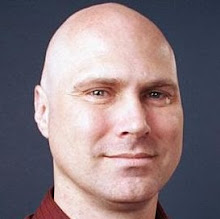When it comes time to make a change, there is always some tipping point, an “I’VE HAD IT!!!” moment, where they decide that they are going to turn things around. I’ve had many of those moments over the years, and I’ve acted on them dozens of times. Still, human nature is a beastly thing to permanently overcome; comfortable patterns tend to set back in. Progress made, if not actively maintained, likely will regress, and a body not actively engaged, or a mind not actively aware will likely return to its “natural balance point”.
Over the years, my “natural balance point” has moved. When I was between 16 and 21, that balance point was 165 pounds. No matter how hard I tried to move that point, either to bulk up or get lean, 165 was where everything evened out. From age 22 to 25, I averaged somewhere around 190 pounds, up or down. After I turned 25, and decided to “Get Right with my inner Mormon”, my baseline shot up considerably to 220 pounds. Some said that this was my body’s revenge for having lived so many years as a starving musician with *really bad* habits. This 220 pound baseline became my standard for fifteen years. I could bulk up or strip down with effort, but if I just let life coast, the 220 pound figure would be my body’s natural equilibrium point.
Well, I’VE HAD IT!!! I don’t want a baseline of 220. I am willing to have a baseline of 200. I’d be even *more* excited if I could actually maintain a baseline of 190 long term.
This begs the question… How does one truly reset a baseline? I know there’s no way I will be able to *passively* maintain a baseline at 200 pounds, and I *definitely* won’t be able to passively maintain one at 190. It will have to be an active endeavor for life if I want to truly maintain at those levels. Plus, as I have become painfully aware over the last several years, tricks and techniques that used to work in earlier years tend to not work as well the older one gets. I’ve read in more than a few places that the body’s natural metabolism adjusts downward at a rate of about 5% every decade. Thus, now that I am 40, I have to make a point to get by on less or work out more to make up the difference.
I believe strongly in the idea of having more than just a target weight as a goal. Plus, it needs to be for more than just a one-time deal. Many people diet down for a reunion, or they diet down because they want to look good in a swimsuit or a particular outfit. While those are perfectly good reasons to train and get in shape, they have a tendency to be quickly forgotten once the day or event passes. Better is to have something related functionally to that weight and the reason why it should be lost. It needs to be more than something like “I want to feel better” or “my clothes don’t fit right anymore”.
Here’s an abbreviated list of some specific goals and hopes that are currently driving me:
* I’ve decided I want to do Fancy Dance as a Pow Wow discipline. It’s quick paced, utilizes rapid movements, and it’s *very* physically demanding; therefore, I want to get to the point where I can dance proficiently as a Fancy Dancer.
* I want to be able to get back into racing form for snowboarding, even if I don’t actively compete any longer.
* I’ve enjoyed the feeling of being pain-free in my lower back, and it was such a wonderful sensation. With the returning weight, the dodginess in my low back is returning I want to go back to that pain free feeling!
* I will be hiking, camping and swimming with the Boy Scout Troop that I lead up at Camp Oljato this summer. It will be at an altitude of 7500 feet. Thus, I’ll need to be in “fighting shape” before I leave; I don’t want to be huffing and puffing while I'm up at Camp.
When goals are set, and clear objectives as to "why" are established, and they are more than just casual and amorphous goals, it tends to be much more practical to make a game plan and stay on track with it. Time will tell if this dime-store philosophy of mine holds up week to week :).
Subscribe to:
Post Comments (Atom)

No comments:
Post a Comment